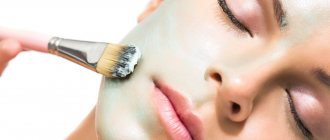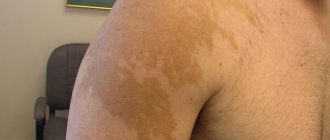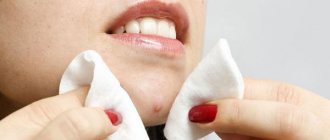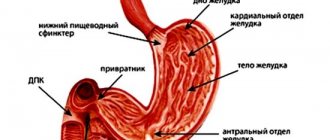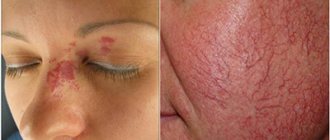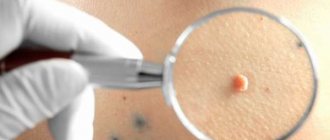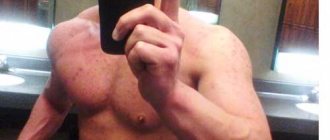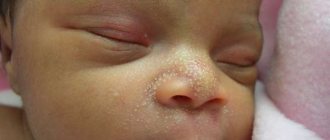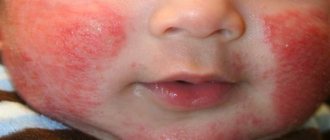Where to begin
In fact, you need to start working with your face by diagnosing the current condition of the skin and finding out the reasons for the problems it has. It is better to contact a specialist with such questions, since this is a key moment. All masks and even hardware procedures are selected specifically according to skin type. And if it is defined incorrectly, they will be ineffective.
Self-diagnosis
Diagnosing your skin type yourself is not as difficult as it seems at first glance. To do this, it is enough to have a clean paper napkin and a mirror on hand. You only need to follow a few simple steps:
- thoroughly cleanse the skin of makeup;
- wash your face with gel or foam;
- gently blot the moisture with a towel;
- wait another 2-3 minutes until the skin is completely dry;
- look at it carefully in the mirror (preferably with magnification);
- Cover your face with a thin paper napkin, press it with your palms and wait a couple of minutes.
Now you can analyze everything you see and determine your skin type. If it is thin, smooth enough with almost imperceptible pores, and the napkin remains clean, your skin is dry. Enlarged pores and blurry greasy spots on paper indicate an oily type.
But more common is the combination, in which the pores are enlarged in the so-called T-zone and the activity of the sebaceous glands is also increased there. The problem area has a lot of acne, blackheads, subcutaneous pimples and rashes.
Identifying problems
Now you need to understand why acne and blackheads appeared on your face and try to eliminate the negative influence of external and internal factors.
The most common reasons that provoke hyperactivity of the sebaceous glands and, accordingly, the appearance of problems are:
- improper skin care;
- unbalanced diet;
- problems with the gastrointestinal tract;
- abuse of decorative cosmetics;
- bad habits (especially smoking);
- endocrine disorders;
- working in a dusty room.
If their impact is not minimized, then all further manipulations may be pointless. At best, you can enjoy the results within a few days.
In addition, some chronic diseases are a contraindication to any facial cleansing, including home methods.
Avoid comedogenic cosmetics
The fight against clogged pores requires an integrated approach, including a review of the decorative and skincare cosmetics you use.
First of all, exclude cosmetic products with substances that are known to be highly comedogenic: lanolin, a number of vegetable oils (coconut, cocoa butter), petroleum products.
During the period of struggle with clogged pores, it is recommended to exclude thick decorative foundations and concealers, as well as cosmetics with silicones.
Manual cleaning
Unfortunately, at home, only manual deep cleansing of facial pores is possible. No masks or peelings prepared according to folk recipes will completely remove fat and dirt from clogged sebaceous ducts. They work only superficially and do not even allow you to get rid of comedones for a long time.
Professional cosmetics and atraumatic cleansing programs are much more effective, but they often do not give 100% results without additional squeezing out deep blackheads.
Preparation
To avoid bruises and wounds on the face, as often happens in teenagers after “cleaning” the face on their own, the skin must be well prepared for this procedure. To do this, you need to complete three steps:
- Cleansing. We start with makeup remover, for which it is better to use not milk, but a two-phase liquid. Then you need to wash well with warm water and foam or gel.
- Peeling. At this stage, the salon most often uses enzyme peeling or fruit acid peeling. These are chemicals that can partially dissolve fat and perfectly soften sebaceous plugs. You can prepare a salt or coffee scrub at home, but under no circumstances use a stone scrub - it can scratch the skin and it will become inflamed after cleansing.
- Warming up It is impossible to remove dirt from closed pores qualitatively. And for them to open slightly, the skin must be steamed or warmed up using a thermal mask. I prefer masks, as they work great on any skin type and soften comedones perfectly. For steaming, it is better to use not pure water, but a decoction of medicinal herbs: chamomile, calendula, eucalyptus, coltsfoot, celandine)
And only now can you proceed directly to cleaning the pores.
Completing the procedure
I think there is no point in saying that all manipulations must be done with perfectly clean and disinfected hands. Or better yet, wear sterile gloves, but many complain that they are inconvenient to work in.
The pressure on the skin should be firm, but gentle so that there are no bruises left afterward. If the fat does not come out, you will have to remove the sebaceous plug with a thin sterile needle.
After the manual treatment of the face is completed, it must be wiped with an antiseptic and the pores closed. This is best done by applying a kaolin mask. It has antibacterial, anti-inflammatory and adsorbing properties, promotes rapid healing of wounds and even slightly tightens the skin. You can buy a ready-made product or make a mask yourself using the recipe below.
Choose cleansing cosmetic products
Look for masks with activated carbon - it absorbs excess sebum, cleanses the skin well, with kaolin - this is a universal cleanser for all skin types that eliminates excess oil, minimizes inflammation, and as a natural absorbent cleanses pores of impurities. For oily, problem skin, look for clay-based masks with zinc, charcoal and volcanic ash.
Cleansing strips can be your assistant for painlessly removing blackheads - they are easy to use and help quickly tidy up the T-zone. However, such strips are ineffective in the presence of dense sebaceous plugs that sit deep in the pores.
Hardware cleaning
Some people ask me whether it is possible to clean the pores on the face well with portable devices at home. Today, such devices can be easily purchased in medical equipment stores or ordered online at a very affordable price. Let me express my grave doubts about the fact that they can really work effectively. Their power is significantly lower than professional equipment. In addition, you need to know many nuances in order to use all their capabilities.
| Way | Description |
| Ultrasound | Can be used on thin and sensitive skin to remove flaking and at the same time moisturize it. For normal people, the device is useful in microcurrent massage mode. It also helps prevent the appearance of early wrinkles. Excellent for removing blackheads. But with very clogged pores it does not give a significant result. |
| Vacuum cleaning | The pressure generated by a portable device is too weak to completely pull out fat from the pores. And if there are pimples and small ulcers on the face, inept handling can contribute to the spread of infection and aggravate the problem. |
| Microdermabrasion | Doesn't clean clogged pores at all. This device has a completely different purpose. It is most effective for lightening pigmentation, lifting, smoothing out fine wrinkles, eliminating shallow scars and scars. I absolutely do not recommend using it on your own. Especially in combination with manual cleaning or a few days before it. |
If you want to effectively clean your face using a hardware method, go to the salon and see a cosmetologist. He will not only select the optimal procedure and carry it out efficiently, but also, if necessary, combine it with manual or atraumatic facial cleansing.
Causes of clogged pores
Clogged pores appear under the influence of certain factors. The following reasons are identified:
- genetic predisposition;
- oily or combination skin type;
- violation of hygiene standards;
- insufficient cleansing and exfoliation;
- use of low-quality decorative cosmetics;
- excessive consumption of sweet, starchy, spicy, salty, spicy and fatty foods;
- dehydration;
- excessive sun exposure.
The best masks
Masks are the best way to clean not too clogged pores on the face. Naturally, I am a supporter of professional drugs. Since they work deeper and are able to regulate the activity of the sebaceous glands, thereby preventing the recurrence of acne.
But there are also proven folk remedies that give good results:
| Mask | Properties | Recipe |
| Kaolin | Helps quickly tighten pores after cleansing, but can also be used to prevent pimples and acne. | A tablespoon of white or green clay is diluted with still mineral or thermal water until it becomes sour cream. To enhance the effect, you can add a few drops of essential oil (eucalyptus, geranium, tea tree); for very dry skin, a teaspoon of grape seed or peach oil. Apply in an even layer, leave until completely dry and rinse with water. Be sure to use moisturizer after. |
| Soda-salt scrub | It gives an almost immediate effect and can be used before an important exit as a means of express cleaning. Suitable only for oily and combination skin. The problem is very annoying, although its condition improves with regular use. | We dilute a teaspoon of salt with a small amount of washing gel to make a paste. Add a quarter teaspoon of soda to it. Apply to moisturized skin and massage gently in circular motions for 2-3 minutes. Rinse off only with summer water. Finally, use a soothing cream, preferably with aloe vera. |
| Coffee and honey scrub | Suitable for problematic, thin and dry skin. Works more delicately, helps smooth out wrinkles. | Add the same amount of liquid honey and olive or coconut oil to a teaspoon of coffee grounds. Mix everything well and distribute over a thoroughly washed and slightly steamed face (useful to do in a bathhouse). Massage gently for 2-3 minutes, then leave for another five and wash off with running water and a small amount of gel. Do not use if you have rosacea! |
| Milk gelatin | A universal product, an analogue of a store-bought film mask. To cleanse the pores better, before using it, the skin should be washed well and lightly steamed. | Pour a tablespoon of gelatin with the same amount of water or milk and heat in a water bath until the crystals are completely dissolved. Apply several layers to the face with a brush and leave until dry. Gently, starting from the neck and tip of the nose, pull off the resulting film. If that doesn’t work, rinse with warm water. |
| Protein-lemon | Excellent for deep cleansing: tightens pores, reduces the activity of sebaceous glands, has whitening properties and gives a slight lifting effect. Especially useful for oily and combination skin. | Separate the egg white from the yolk and beat with a teaspoon of honey until foam forms. Add a teaspoon of lemon juice and a few drops of essential oil. Apply an even layer to the face and leave until completely dry. Rinse off with running water. |
You can still find many other recipes for useful masks. But it is precisely those described above that usually take first place in popular ratings. And, as a cosmetologist, I confirm their effectiveness and can recommend them to my clients.
What are comedones?
The photo shows open comedones or blackheads
Comedones are a small cyst that is formed as a result of blockage of a pore with sebum mixed with desquamated epithelium. They do not pose a threat to human life or health, but they greatly spoil the appearance, which is especially difficult for women.
Comedones on the face depend on the way they form and, depending on this, there are two types:
- Open . They are also called blackheads. The pores are enlarged and clogged with horny masses consisting of sebum and desquamated epithelial cells. The dirt that has accumulated in the pores comes into direct contact with the air. This is what determines the dark color of the formation, because the secretion of the sebaceous glands, when oxidized, acquires this color. The contents come out if you press on such a black comedon. Do not cause complications.
- Closed . They are tubercles with a diameter of 1-2 mm with a whitish or yellowish head, deeply embedded inside the skin and not in contact with air. White comedones are best visible when the skin is stretched, and when pressing on the formation, the contents practically do not come out. In this case, a secretion is produced that has too thick a consistency, most often due to problems with the stomach, intestines, thyroid gland, lack of essential fatty acids in food, and the epithelial cells are not completely exfoliated, so they block the exit of sebum and prevent it from being released unhindered. Over time, the accumulated fat settles deeper, bacteria gradually develop in it, inflammation begins, and complications arise.
Open comedones are much more common than closed comedones.
Note! What makes sebum liquid is a substance called squalene - it is synthesized under the influence of essential fatty acids.
Photo of subcutaneous closed comedones
Most often, comedones form on the face, since the pores here have a high density. In addition, the constant use of cosmetics containing oils contributes to their occurrence. Their favorite place is the T-zone, which is prone to increased oiliness and suffers most from the sun, wind and various types of pollution.
However, they can also form on other parts of the body, with the exception of the palms and soles. The back is most prone to damage, since it is difficult to wash and is constantly exposed to friction and increased sweating, the neck due to the large number of pores, the chest and shoulders - also as a result of friction from clothing.
Comedones occur in people of any age, but most often appear between 12-24 years. They are common in adolescents, pregnant women and women with menstrual irregularities and menopause. In adulthood, the problem is not pronounced, since the amount of sebum secreted decreases.
After cleaning
How you care for your face after cleansing is also very important. I strongly advise women to reconsider their attitude towards decorative cosmetics and use a lighter version of everyday makeup. Thick foundations have an excellent ability to clog pores and often become the main source of problems.
Deep cleaning foam, enzyme peeling and ultrasonic scrubber are great ways to keep your skin in good condition. Useless for severely clogged pores, it works perfectly as a preventative, while stimulating subcutaneous blood circulation and preventing the appearance of early wrinkles and pigmentation. Therefore, such a portable device is worth purchasing, but it must be used correctly and for its intended purpose.
Don't touch your face
Finally, last but not least, try to touch your face with your hands as little as possible. Germs and bacteria live on our hands and can be transferred to our face. The result is that the skin becomes inflamed and the pores become clogged. Develop the habit of touching your face as little as possible, and you will be less likely to experience inflammation and acne.
Clogged pores are the result of increased activity of the sebaceous glands, insufficient cleansing, and excessive use of thick decorative cosmetics. Cleanse your skin well, use acid or enzyme peels, and cleansing clay masks to give your face a well-groomed appearance. If the pores are severely clogged, you first need mechanical cleaning, and only then corrective home care.
Summing up
According to reviews from my clients, high-quality professional cleaning performed once every 2-3 months is much better than a procedure done at home. Therefore, you still shouldn’t give up going to the salon. But if you decide to act on your own, try to follow all the steps described above as carefully and consistently as possible. This will avoid severe skin irritation and bruising.
If you do not regularly do light peelings and do not normalize the functioning of the sebaceous glands, your pores will become clogged. Therefore, prevention comes first after intensive cleaning. For dry skin, it is enough to use peeling once every 7-10 days, and for oily skin – up to twice a week. It will remove dead skin scales from the top layer of the epidermis and remove excess fat. Clay masks are also useful.
Recommendations for basic care for problem skin
Use tonics or lotions after washing: they complete the cleansing process, protect the skin from drying out, and eliminate the feeling of tightness. They even out the tone and texture of the epidermis, accelerate cell renewal, thereby improving the condition of skin with enlarged, clogged pores.
Introduce creams with retinols and acids into your cosmetic diet. Retinols regulate the secretion of sebum, the excess of which accumulates in the pores in the form of plugs. Acids gently exfoliate the stratum corneum of the epidermis - these can be fruit acids or salicylic acid. The former are suitable for normal skin, salicylic is more preferable for problematic skin with inflammation.
